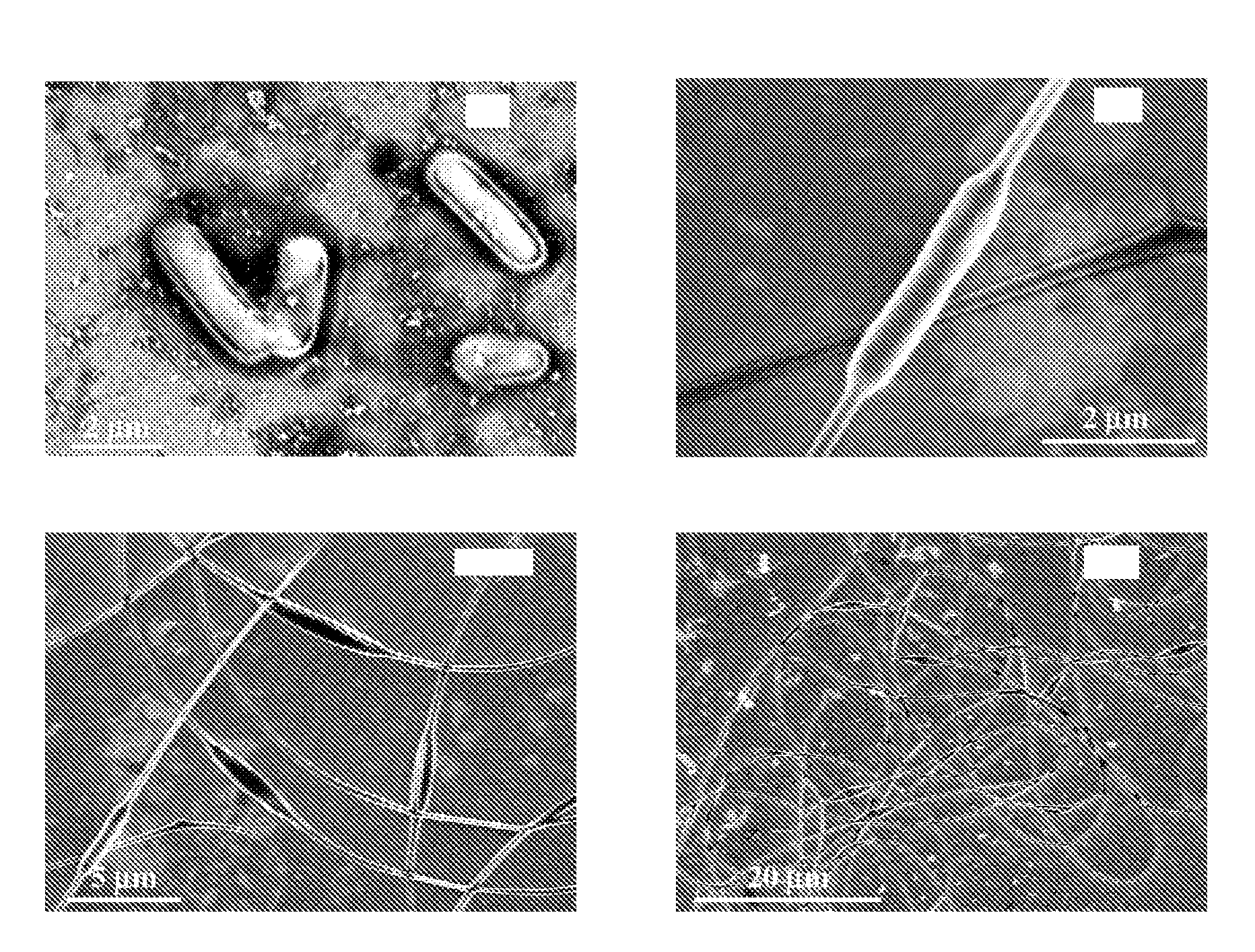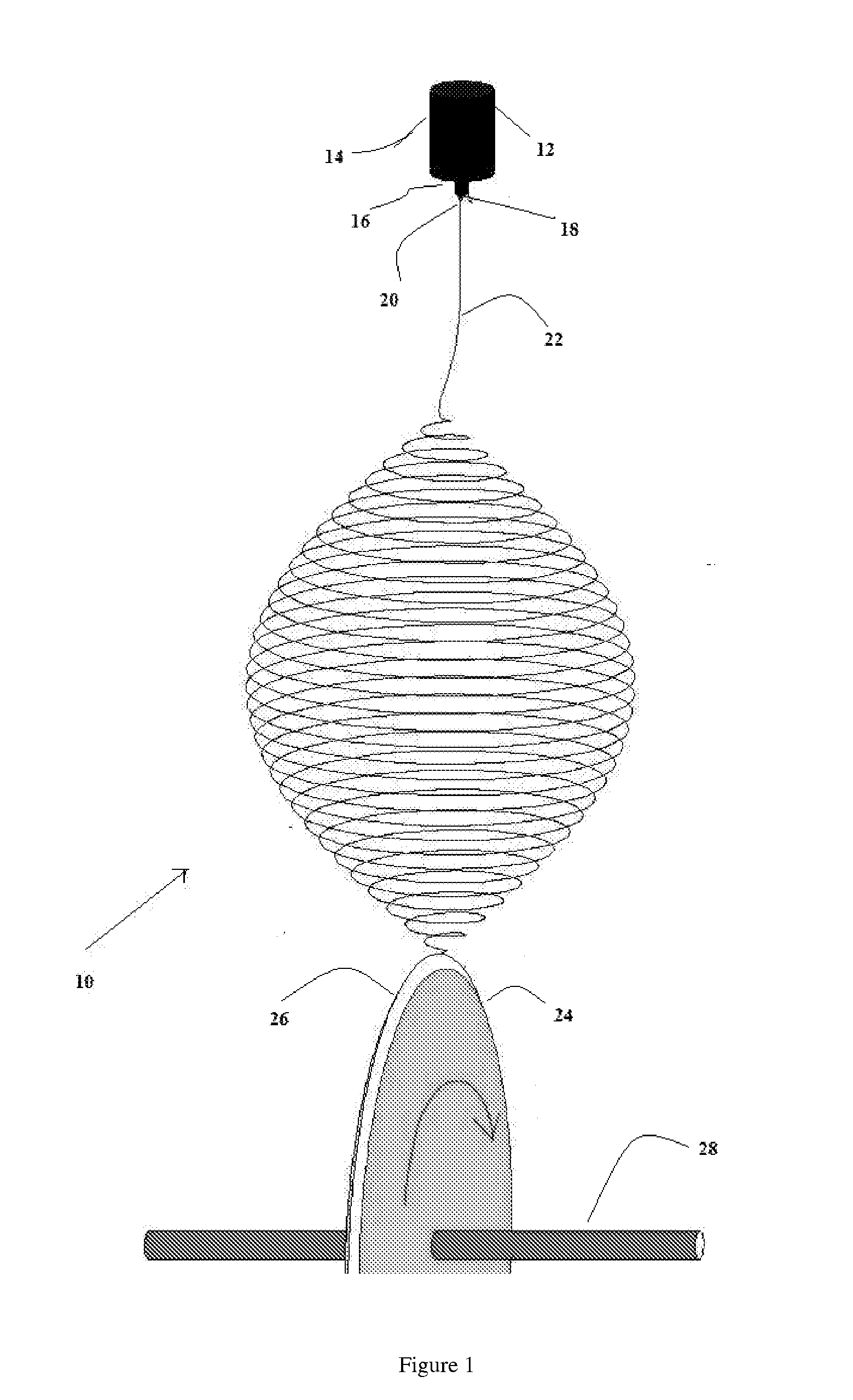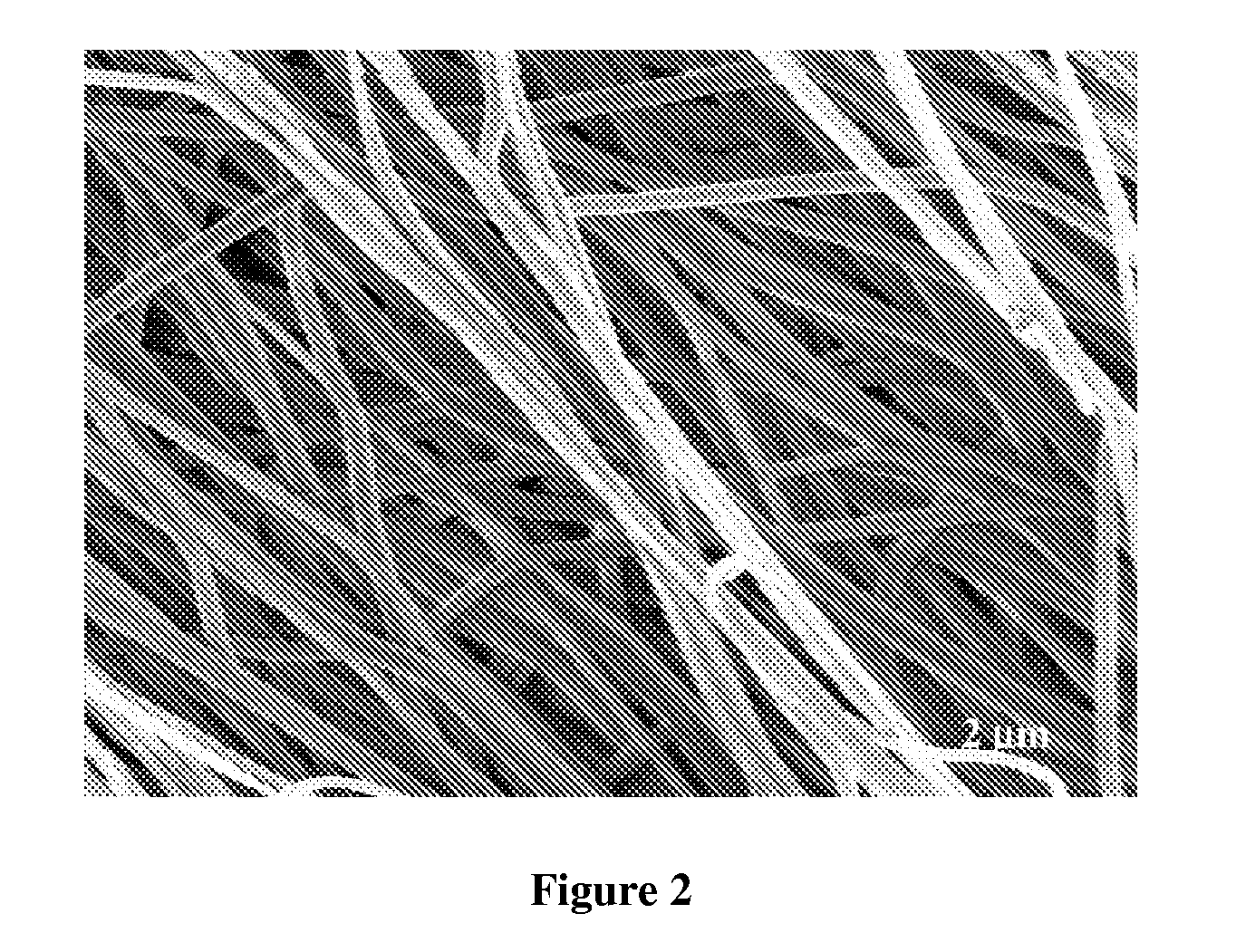Encapsulation of bacteria and viruses in electrospun fibers
a technology of encapsulation and fiber, applied in the field of preservation of organisms, can solve the problems of loss of viability, loss of virulence and occurrence of mutations, and inability to stor
- Summary
- Abstract
- Description
- Claims
- Application Information
AI Technical Summary
Benefits of technology
Problems solved by technology
Method used
Image
Examples
examples
1. Materials and Methods
[0070]Biological Materials
[0071]Bacterial cells Escherichia coli (E. coli, strain W3110) [24] and Staphylococcus albus (S. albus), and bacteriophages T7 [25], T4 [26] and λ [27] were used.
[0072]E. coli are rod-shaped bacilli having a diameter of about 1 μm and an average length that is twice the diameter. E. coli are easy to grow and to count, both microscopically and biologically. The prototrophic strain used was W3110 (obtained from R. Somerville, Purdue University, Lafayette, Ind., USA), a type K12 strain which can be grown in Vogel-Bonner medium E, comprising inorganic salts (MgSO4.7H2O, Citric acid monohydrate, K2HPO4, NaHNH4 PO4.4H2O) with glucose as the carbon source [28]. Batch cultures grown overnight in this medium at 37° C. attain a density of about 1-2×109 cells ml−1.
[0073]S. albus is a spherical bacterium (coccus) having a diameter of about 600 nm. The strain examined (obtained from the Department of Biological Sciences, Stanford University, Stan...
PUM
| Property | Measurement | Unit |
|---|---|---|
| diameter | aaaaa | aaaaa |
| inner diameter | aaaaa | aaaaa |
| distance | aaaaa | aaaaa |
Abstract
Description
Claims
Application Information
 Login to View More
Login to View More - R&D
- Intellectual Property
- Life Sciences
- Materials
- Tech Scout
- Unparalleled Data Quality
- Higher Quality Content
- 60% Fewer Hallucinations
Browse by: Latest US Patents, China's latest patents, Technical Efficacy Thesaurus, Application Domain, Technology Topic, Popular Technical Reports.
© 2025 PatSnap. All rights reserved.Legal|Privacy policy|Modern Slavery Act Transparency Statement|Sitemap|About US| Contact US: help@patsnap.com



